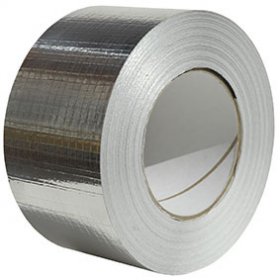Well technically a power outage broke my system. My machine lost power in the middle of a pacman upgrade which left me able to boot, but with very limited functionality. Thankfully I keep an emergency live USB laying around for just such contingencies and was able to complete timely repairs. For the record, if anyone else runs into this problem the Arch Wiki has instructions on how to proceed.
I cannot express how much of a relief it is to have a system which is designed in such a way to enable this type of diagnostic and repair capability. It was also a great reminder to revisit my backup and recovery options which will be one of this weekend’s projects.
My wife had a problem with her Windows 11 PC the other day and I literally couldn’t even figure out how to begin to diagnose the issue, let alone fix it. I am so thankful for the Arch Wiki and the extensive documentation available to cover these types of situations. I know Arch will forever have the reputation for being a “hard” distribution, but not having to feel helpless when something goes wrong is so nice!
Yeah… I don’t have those pacman update issues anymore… I used Arch wiki to setup btrfs, snapper, and grub-btrfs. I can boot from a snapshot and revert if there is an issue
nixos and bazzite are waiting for you
you are released from pacman
I like pacman.
I have found in my short four years using Linux distros that people say arch is hard because you can’t leave alone and sometimes the rolling releases break things with new implementations. I use it as my daily driver and the biggest issue I ever had was running out of space on the root partition the first manual install I did. Arch is lovely with the wiki, and honestly Debian too. I run those distros all over my house and I am in love with my home network.
Arch is hard if you don’t like reading documentation and doing basic troubleshooting. Which is perfectly valid.
If you don’t mind that or even enjoy learning things that way, arch is the nicest experience possible.
how did you go about expanding your root partition?
Use gparted.
I followed the Arch Wiki page on doing it. After all was said and done nothing happened so I wiped the entire thing and set it up right lol
sorry wrong person, thanks lol ill have to wait until i get my backup storage.
deleted by creator
In my case it wasn’t expanding the partition, it was clearing the pacman cache of old packages. I have limited space on my laptop.
thats what i did as well, using paccache to automate it. i would like to increase my partition size to 60-100 from 40 though, i just dont know how to go about it safely.
sure, arch is “hard” but it’s also hardy in my experience
One of the reasons why I love my immutable distro: if an update breaks things, I just reboot and select the previous image in GRUB.
I do that with BTRFS!
It was also a great reminder to revisit my backup and recovery options which will be one of this weekend’s projects.
If the problem was a power outage, maybe it’s time to think about getting a UPS.
Good to know. I still like Debian and RHEL-derived distros because even if an upgrade is interrupted, you can almost always boot and resume where it left off. I can’t think of anything so critical that interrupting its upgrade would render a system unbootable (except the kernel, but that’s why old ones are kept around).
Diagnosis: Windows 11
Treatment: install Linux
There. Glad I could help.
not having to rely on “black box” solutions are really nice
Another popular Linux system restore utility is called Timeshift. It has a GUI to control making system ‘snapshots’ at regular intervals … as frequently as you like. I’ve never had to use it to save -major- messes, but I’ve needed it a couple of times. It’s worked flawlessly … taking just a few minutes to scan and replace/remove wayward packages.
Yep, so good to be able to recover. I love btrfs for this exact reason. Immediately before updates a new snapshot is taken and if I lose power or similar it doesn’t matter, I can just boot to the state before the update. Linux is awesome, the full ecosystem around it is amazing, made by such passionate nerds, we are very lucky.
Having at least your OS’s install/rescue media as well as some dedicated rescue ISOs (Ultimate Boot CD, SystemRescue, etc) on a Ventoy usb stick is something you will never regret - and future you may be so grateful.
Also, if you ever find yourself being lazy while creating symlinks and not making them relative - this story should make you realise why your system root might not always be root. Those ugly
../../usr/lib/are preferred for good reason.








